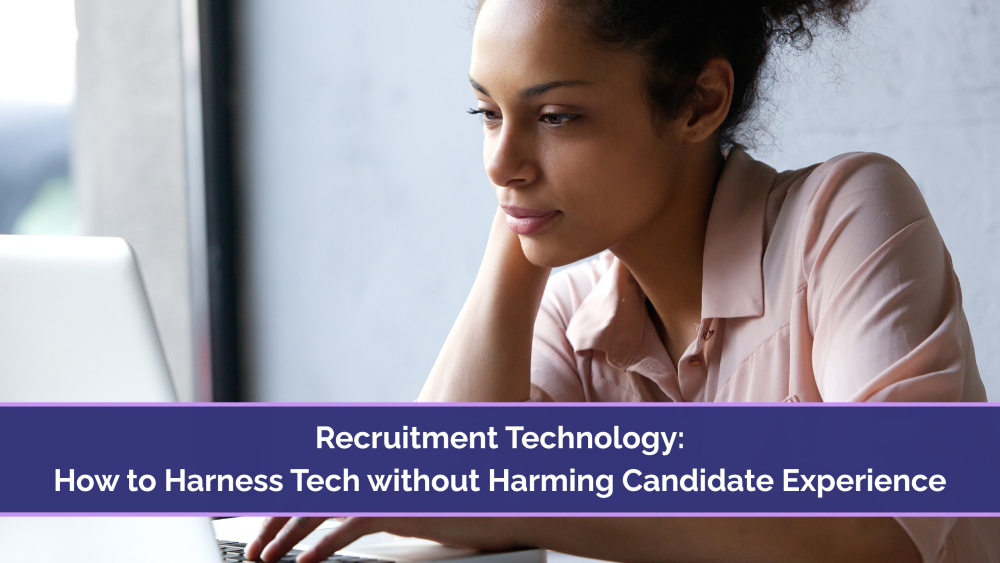Recruitment Technology: Harness Tech Without Harming Candidates

How Employers Can Harness Tech without Harming Candidate Experience
Recruitment technology is now integral to Talent teams. From applicant tracking systems (ATS) to automated assessments, today’s tools are designed to make hiring faster, fairer and more efficient. For employers competing in tight talent markets, these systems can transform how teams attract, assess and retain talent.
But technology only works when it’s implemented correctly. Without clear processes, training and a focus on human experience, recruitment tech can backfire badly, creating confusion for hiring managers, frustration for candidates and wasted investment for HR leaders.
At Troi, we’ve seen both sides of the story. Done well, recruitment tech enables scalable, data-driven and candidate-friendly hiring. Done badly, it becomes another layer of friction.
So, what are the advantages of recruitment technology — and what risks do employers need to avoid?
Recruitment Technology - The Advantages
Efficiency at scale
An ATS can centralise applications, automate admin tasks and provide hiring managers with a clear view of every stage in the recruitment process. For fast-growing businesses, this scalability is critical. It reduces manual workload, shortens time-to-hire and ensures hiring teams can focus on strategic conversations, not paperwork.
Data-driven insights
Recruitment technology brings visibility. Dashboards track time-to-hire, candidate drop-off rates, and source effectiveness. With this data, HR leaders can identify bottlenecks, optimise campaigns and make more informed workforce planning decisions — improving overall recruitment tech ROI.
Stronger candidate experience
AI-driven scheduling tools, chatbots and personalised updates mean candidates are kept in the loop, without recruiters spending hours chasing diaries. A seamless process builds employer brand equity and ensures candidates feel valued, even if they aren’t successful.
Consistency and compliance
Structured workflows enforce best practice across teams, regions and divisions. That means less risk of bias, more standardised evaluation, and a recruitment process that holds up under scrutiny in regulated industries.
And the disadvantages...
Confused Hiring Managers
Even the best ATS is only effective if people actually use it. If platforms aren’t intuitive or tailored to the organisation, hiring managers quickly revert to old habits — spreadsheets, inboxes, and side channels. The result? Fragmented data and low adoption.
Alienated candidates
Technology that strips out human touchpoints can harm the candidate experience. Pre-recorded interviews with countdown timers, unclear instructions, or over-automated testing can leave talented people disengaged before they ever meet the team.
Overreliance on AI
AI is powerful — but it’s not perfect. Used without oversight, it risks embedding bias, filtering out strong candidates, or giving false reassurance of “algorithmic objectivity.” Employers must set guardrails and keep humans in the loop.
Missed ROI
Technology is a significant investment. Without training, change management and proper integration, adoption suffers. Too often, businesses pay for platforms that end up under-used — or worse, actively resisted.
Step-by-Step Guide: How to implement recruitment tech the right way
Step 1. Define the Business Case
Identify the problems you need the system to solve (e.g., reducing time-to-hire, improving candidate communication, creating compliance visibility). Secure leadership buy-in by linking objectives to wider business outcomes.
Step 2. Select the Right Technology
Don’t be dazzled by features. Focus on usability, scalability, integration with existing HR tech, and vendor support. Involve recruiters and hiring managers early so the chosen platform matches real-world workflows.
Step 3. Plan the Implementation Roadmap
Map out stages — from configuration and testing to roll-out and adoption. Build realistic timelines with input from HR, IT, and the vendor.
Step 4. Train and Support Hiring Managers
A platform is only as good as the people using it. Provide role-specific training and ongoing resources so hiring managers feel confident, not confused.
Step 5. Embed Candidate Experience Safeguards
Test the process from the candidate’s perspective. Ensure communications are clear, automated touchpoints feel human, and assessments add value rather than stress.
Step 6. Monitor, Measure and Optimise
Track metrics such as adoption rates, time-to-hire, and candidate satisfaction. Use analytics to refine processes and prove ROI.
Why Expert Support Matters
Working with implementation specialists can make the difference between a smooth roll-out and a failed project. At Troi, our embedded consultants partner directly with vendors and internal HR teams to:
- Translate business goals into system configuration.
- Train hiring managers so adoption sticks.
- Keep candidate experience front-and-centre.
- Ensure integrations (with HRIS, payroll, or CRM) are seamless.
- Deliver measurable ROI, not just a new login screen.
Recruitment tech is a big investment. With expert guidance, it becomes a real competitive advantage. Without it, it risks becoming an expensive distraction.
Making Recruitment Tech Work: The Human + Tech Balance
The real opportunity lies in integration. Recruitment technology should enable recruiters and hiring managers to focus on what they do best: building relationships, assessing potential, and influencing business strategy.
Technology takes care of the repeatable, time-consuming tasks. Humans bring judgment, empathy, and cultural insight. Together, they deliver hiring that is both efficient and human.
At Troi, we specialise in helping businesses strike this balance. Our embedded consultants don’t just switch on platforms — they integrate them into your processes, train your people, and make sure candidate experience sits at the heart of every decision.
Key Takeaways for Employers
Recruitment technology is a powerful enabler — but only when embedded properly.
AI recruitment tools can drive efficiency and insight, freeing recruiters for high-value work.
Poor implementation risks confusion and frustration for hiring managers and candidates alike.
Human + tech balance is essential: automation should support, not replace, the personal touch.
Expert guidance ensures ROI by aligning vendor technology with business needs and team adoption.
The future of hiring is tech-enabled but not tech-led. Employers who succeed will be those who blend recruitment technology with human expertise, ensuring efficiency without losing empathy.
At Troi, we help businesses get there faster, combining deep recruitment expertise with the right technology, implemented the right way.